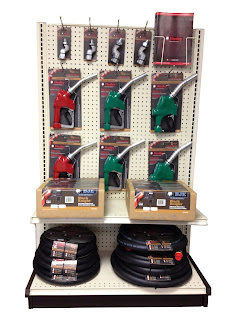The Trump administration announced in
late 2018 it would end certain limits on blending higher concentrations of ethanol
with gasoline. The process of putting that into practice is in the hands of
the Environmental Protection Agency (EPA) which faces a May 2019 deadline to complete
that work. Amid speculation the government shutdown slowed the process, EPA subsequently said in a Reuters report that the rule would be completed in time for the summer driving season.
If that occurs, the days of fuel-dispensing outlets that offer E15 changing-out labels that state the fuel is safe for vehicles manufactured in 2001 or later (temporarily replacing them with labels about the summer-time E15 prohibition) might soon be over.
If that occurs, the days of fuel-dispensing outlets that offer E15 changing-out labels that state the fuel is safe for vehicles manufactured in 2001 or later (temporarily replacing them with labels about the summer-time E15 prohibition) might soon be over.
In 2011, EPA approved E15 for
use in light-duty conventional vehicles of model year 2001 and newer, through a
Clean Air Act waiver request, based on significant testing and research funded
by the U.S. Department of Energy. The EPA’s position had been that summertime
use of E15 puts more emissions into the atmosphere than smog-regulations
permit. Ethanol producers disagree with this assessment.
Demand for E15
Fuel-dispensing outlets are likely
assessing how much more demand there might be for E15 on a year-round basis. The
U.S. Department of Energy states E15 is not widely available; sold at
more than 1,400 stations in 29 states. But an interesting article on this topic
appeared in American
Agriculturalist, which noted in part that “…retailers are seeing higher
demand for E15 when it is added as a choice. Having the Trump administration
make the move to make it a year-round fuel could open the door to more sales,
too…”
Stations are not required to sell
E15, but some have started offering E15 due to equipment grants and better
profit margins when compared with regular gasoline. Consumer education about
the differences between E10 and E15 will almost certainly increase over time. An
article in Axle
Addict gives E15 an edge with emissions, improved
fuel economy, and engine performance. “And even though E15 has higher octane
than E10, it normally costs less per gallon.”
There are additional regulations for
stations selling blends above E10. For more information, visit the Department of
Energy’s Codes,
Standards, and Safety web page.




